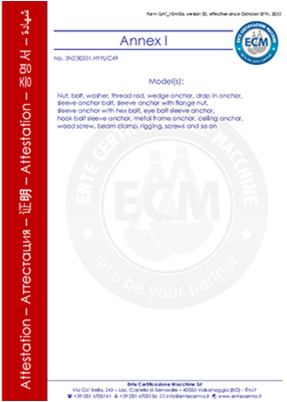Dec . 05, 2024 20:50 Back to list
Choosing the Right Ceiling Screw Anchor for Secure Installation in Your Home
Understanding Ceiling Screw Anchors A Comprehensive Guide
When it comes to home improvement and construction projects, one of the essential components often overlooked is the anchor. Specifically, ceiling screw anchors are a critical item for anyone looking to hang items from overhead, be it lighting fixtures, ceiling fans, or decorative pieces. Understanding the various types, installation methods, and applications of ceiling screw anchors can significantly influence the success of your project.
What are Ceiling Screw Anchors?
Ceiling screw anchors are specialized fasteners designed to provide a secure hold in various ceiling materials, including drywall, plaster, and concrete. They are designed to distribute weight evenly, making them ideal for suspending heavy objects. Unlike regular screws, screw anchors help to prevent the fasteners from pulling out of the ceiling material, ensuring the safety and longevity of your hanging projects.
Types of Ceiling Screw Anchors
There are several types of ceiling screw anchors available, each suited to different applications and materials
1. Molly Bolts These are hollow wall anchors that expand when a screw is driven into them. They lock into place and can support substantial weight, making them suitable for hanging heavier items from ceilings made of drywall.
2. Toggle Bolts Known for their exceptional holding power, toggle bolts consist of a machine screw and a spring-loaded wing. Once inserted through the ceiling material, the wings open up behind the surface, providing a strong anchor point.
3. Expansion Anchors Commonly used in concrete ceilings, expansion anchors consist of a metal sleeve that expands upon insertion of a screw. They are incredibly robust and are ideal for heavy-duty applications.
4. Plastic Wall Anchors These are lighter-duty anchors that work well in drywall. While they don’t have the same holding capacity as metal anchors, they are suitable for lightweight fixtures.
How to Install Ceiling Screw Anchors
Installing ceiling screw anchors may seem daunting, but with the right tools and techniques, you can do it effectively. Here’s a step-by-step guide
1. Choose the Right Anchor
Before installation, assess the weight of the object you intend to hang and the type of ceiling material. This will help you select the appropriate anchor type.
ceiling screw anchor

Using a pencil, mark the exact spot where you want to install the anchor. Ensure it's level and in the right position.
3. Drill a Hole
Using the appropriate drill bit for your chosen anchor, create a hole in the ceiling. The size of the hole should match the diameter of the anchor being used.
4. Insert the Anchor
Depending on the type of anchor, you may need to manually insert it or tap it into place with a hammer. For toggle bolts, you will need to insert the wings through the hole before they open up behind the ceiling.
5. Secure the Screw
Once the anchor is in place, align your object with the anchor and carefully drive the screw into the anchor, ensuring it is snug but not over-tightened. Over-tightening can strip the anchor or damage the ceiling material.
Applications of Ceiling Screw Anchors
Ceiling screw anchors are invaluable for various applications, including
- Light Fixtures Safely secure lighting to your ceiling without fear of falling. - Ceiling Fans Ensure your ceiling fans are safely mounted to prevent any accidents. - Decorative Elements Hang chandeliers, artwork, or other decor that adds to the aesthetic of your space. - Storage Solutions Utilize your ceiling for additional storage with hooks or racks for items like bikes or seasonal decorations.
Conclusion
In conclusion, ceiling screw anchors are essential tools for safely and effectively hanging various items from your ceiling. Understanding the types available, proper installation techniques, and their diverse applications empowers you to take on your home projects with confidence. Whether you are a seasoned DIY enthusiast or a beginner, incorporating ceiling screw anchors into your toolkit will undoubtedly enhance your ability to create functional and appealing spaces in your home. With the right knowledge, you can tackle any ceiling installation with ease and assurance.


